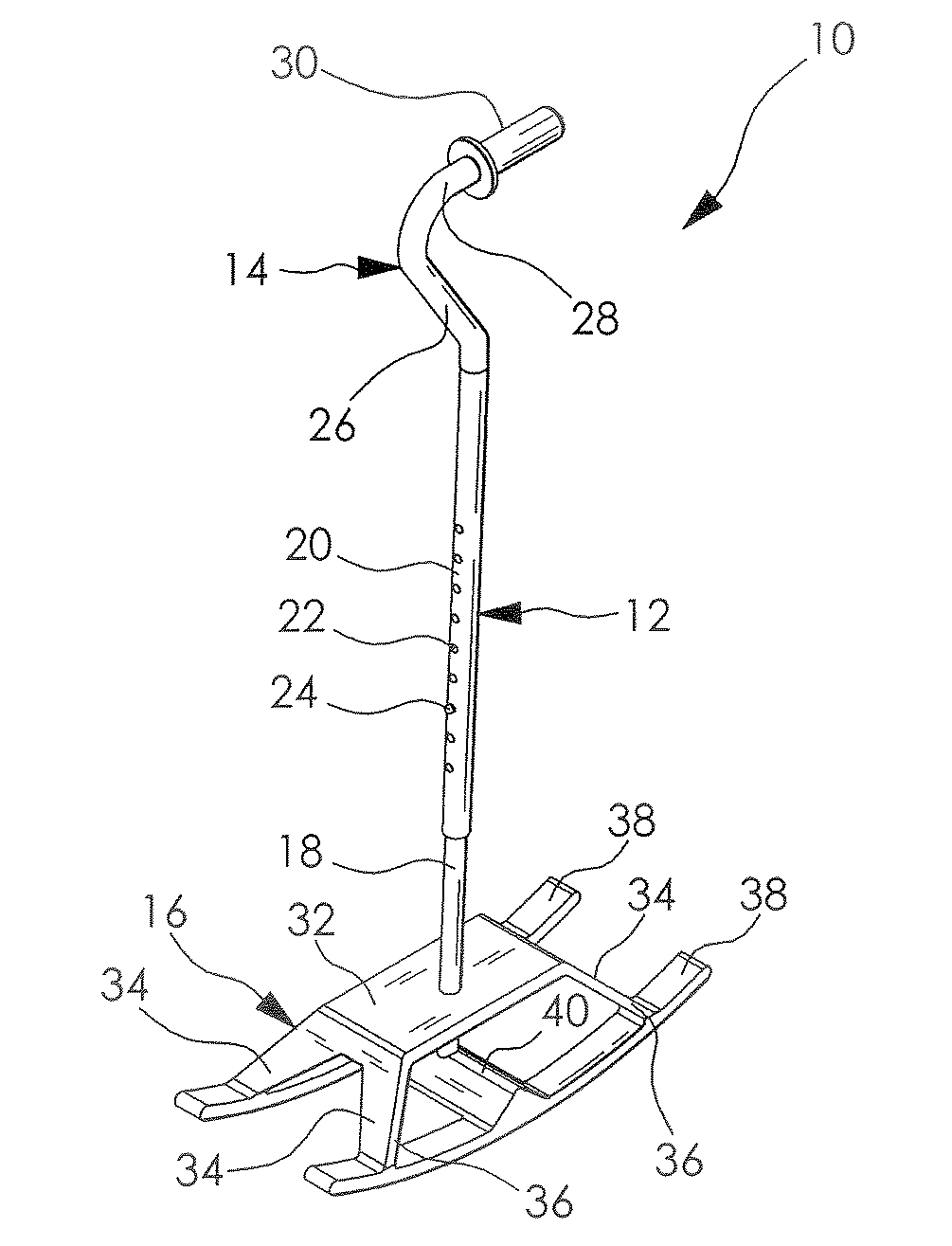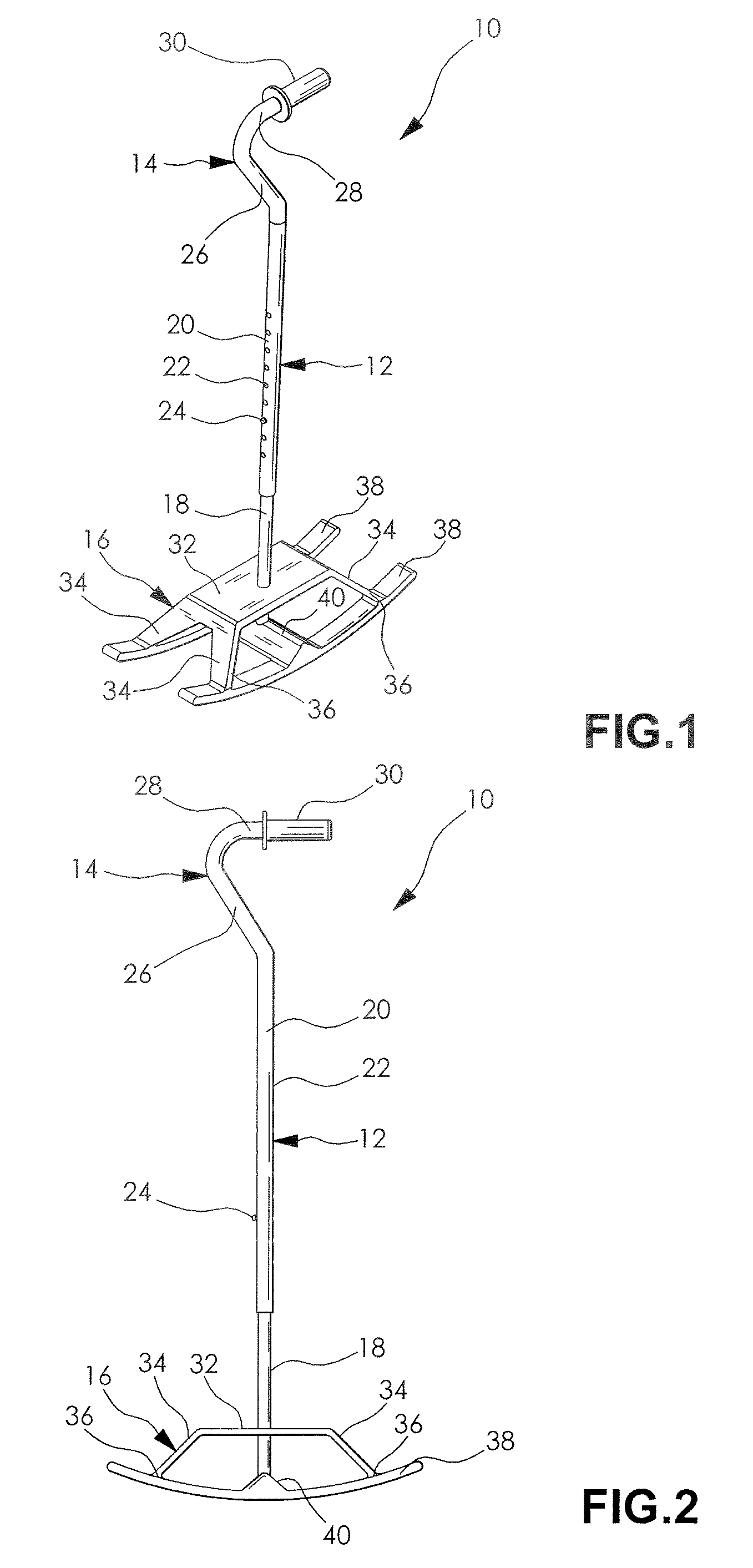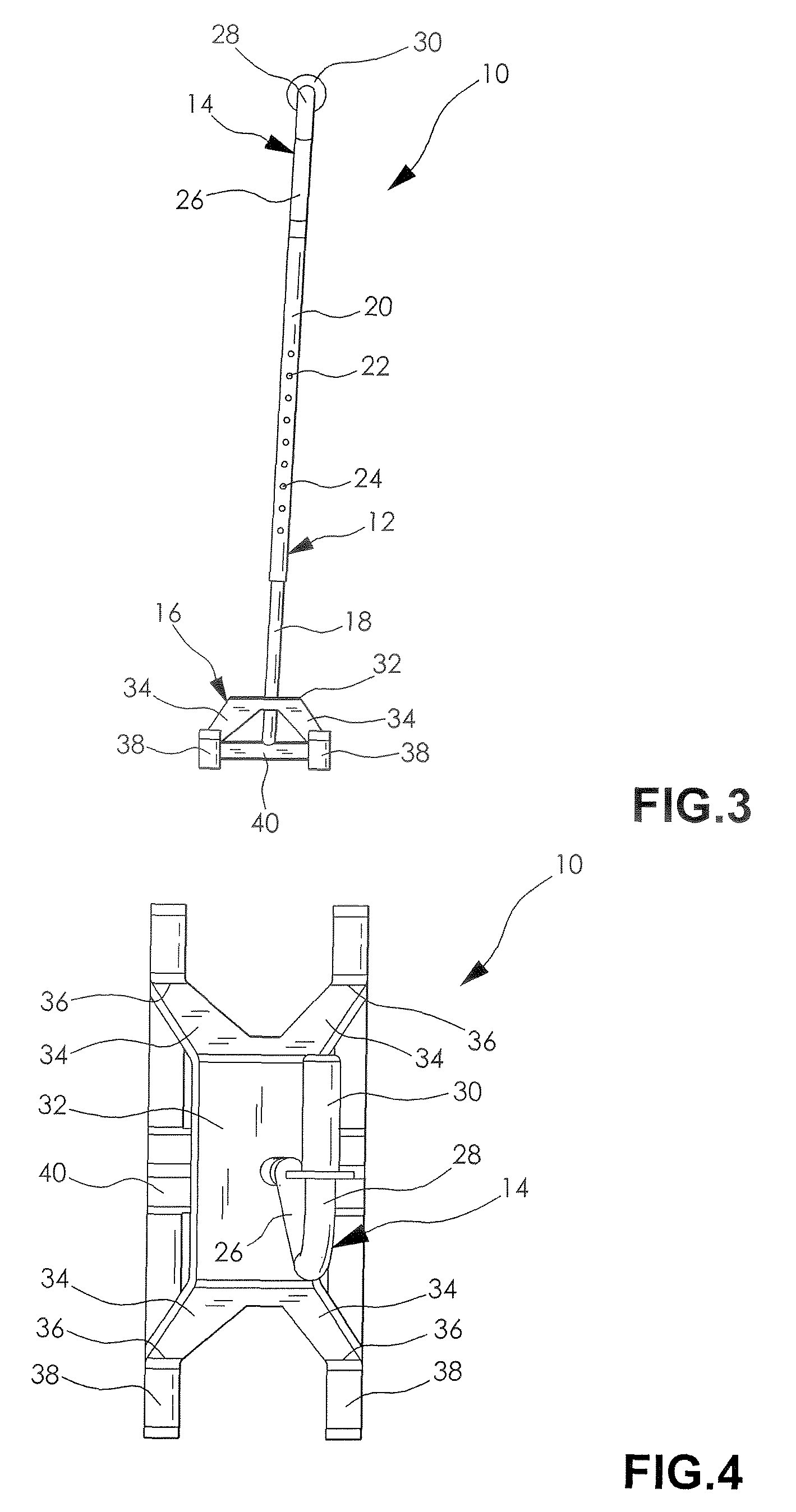Mobility assistance device
a technology of mobility assistance and support device, which is applied in the direction of walking aids, crutches, physical therapy, etc., can solve the problems of user's inability to provide adequate traction, undesirable reduction in stability of user, and user's tendency to fall to the side, so as to facilitate proper posture of user, facilitate the maximization of traction, and provide lateral stability
- Summary
- Abstract
- Description
- Claims
- Application Information
AI Technical Summary
Benefits of technology
Problems solved by technology
Method used
Image
Examples
Embodiment Construction
[0022]The following detailed description and appended drawings describe and illustrate various exemplary embodiments of the invention. The description and drawings serve to enable one skilled in the art to make and use the invention, and are not intended to limit the scope of the invention in any manner.
[0023]FIGS. 1-7 illustrate a mobility assistance device 10 in accordance with an embodiment of the invention. The mobility assistance device 10 includes a main shaft 12 having a handle 14 disposed at one end and a foot member or a ground engaging member 16 disposed at an opposite end thereof.
[0024]The main shaft 12 includes a pair of cooperating elongate members 18, 20 such as tubes for example. One end of member 18 is fixedly attached to the base member 18, and an opposite end thereof is adjustably connected to one end of the elongate member 20. It should be understood that the one end of elongate member 18 can be removably attached to foot member 16. In the embodiment shown, the el...
PUM
 Login to View More
Login to View More Abstract
Description
Claims
Application Information
 Login to View More
Login to View More - R&D
- Intellectual Property
- Life Sciences
- Materials
- Tech Scout
- Unparalleled Data Quality
- Higher Quality Content
- 60% Fewer Hallucinations
Browse by: Latest US Patents, China's latest patents, Technical Efficacy Thesaurus, Application Domain, Technology Topic, Popular Technical Reports.
© 2025 PatSnap. All rights reserved.Legal|Privacy policy|Modern Slavery Act Transparency Statement|Sitemap|About US| Contact US: help@patsnap.com



